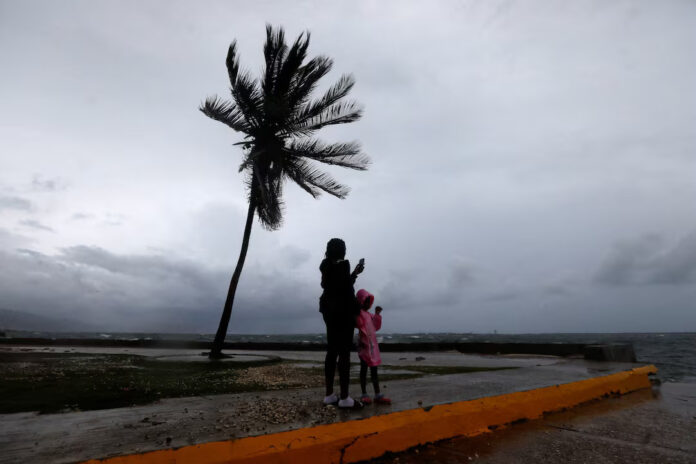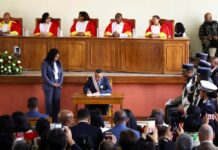
Hurricane Melissa began lashing Jamaica on Monday afternoon as a “catastrophic” Category 5 storm, packing sustained winds of up to 175 miles per hour (282 kilometers per hour) and threatening to deliver record-breaking devastation to the Caribbean island.
According to the U.S. National Hurricane Center (NHC), Melissa was expected to move directly over Jamaica late Monday or early Tuesday before crossing eastern Cuba on Tuesday night and reaching the Bahamas and Turks and Caicos by Wednesday.
The slow-moving storm has rapidly intensified over unusually warm Caribbean waters, allowing it to expand to a size larger than the length of Jamaica itself.
Forecasters warned the hurricane could bring up to three feet (nearly one meter) of rain, triggering life-threatening flooding, landslides, and storm surges across coastal areas.
“There is no infrastructure in the region that can withstand a Category 5,” Jamaican Prime Minister Andrew Holness said in a national address, adding that his government had prepared a $33 million emergency response fund and insurance provisions for damages potentially exceeding last year’s Hurricane Beryl.
Despite mandatory evacuation orders affecting about 28,000 residents, authorities said many people were hesitant to leave their homes due to fears of looting. Buses were deployed across affected areas to transport evacuees to emergency shelters.
“Tens of thousands of families are facing hours of extreme wind gusts above 100 mph and days of relentless, torrential rainfall,” said AccuWeather Chief Meteorologist Jonathan Porter. “This is a dire situation unfolding in slow motion.”
Damian Anderson, a teacher from Hagley Gap in the Blue Mountains, told Reuters that his community was already isolated. “We can’t move,” he said. “We’re scared. We’ve never seen a multi-day event like this before.”
Neighboring countries are also bracing for impact. Haiti and the Dominican Republic reported at least four storm-related deaths following days of heavy rain.
Haitian authorities said more than 3,600 people had taken refuge in temporary shelters, while flights and maritime operations were suspended across the southern peninsula.
In Cuba, more than 500,000 residents from coastal and mountainous areas have been evacuated, with over 250,000 moved to shelters in Santiago de Cuba, which lies directly in the storm’s predicted path. Schools and transportation services across eastern Cuba were suspended as preparations intensified.
Bahamian Prime Minister Philip Davis also ordered evacuations in the southern and eastern islands as Melissa edges closer.
Meteorologists warn that Melissa could go down as one of the most destructive hurricanes in Caribbean history. Jamaica’s last major direct hit was from Category 4 Hurricane Gilbert in 1988, but experts say Melissa’s size, strength, and slow pace make it potentially far more devastating.
Source: Reuters
Written By Rodney Mbua


















